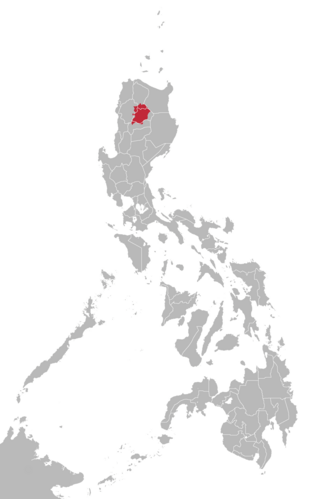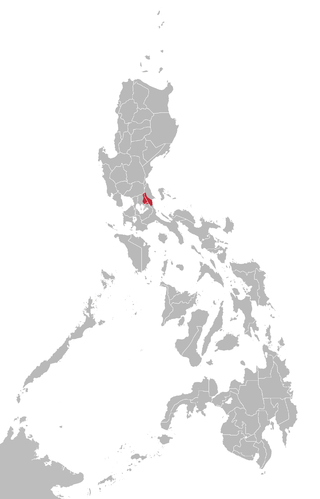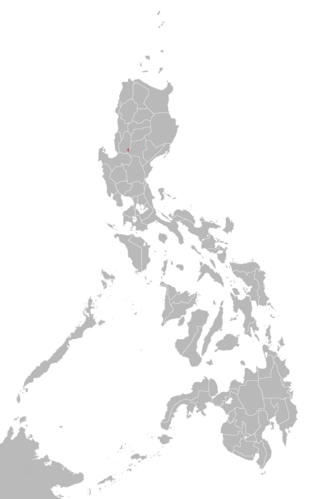Related Research Articles
Kuy, also known as Kui, Suay or Kuay, is a Katuic language, part of the larger Austroasiatic family spoken by the Kuy people of Southeast Asia.

Kalinga is a dialect continuum of Kalinga Province in the Philippines, spoken by the Kalinga people, alongside Ilocano. The Banao Itneg variety is not one of the neighboring Itneg languages.

Bontoc (Bontok) is the native language of the indigenous Bontoc people of the Mountain Province, in the northern part of the Philippines.
The Gong language is an endangered Tibeto-Burman language of Western Thailand, spoken in isolated pockets in Uthai Thani and Suphanburi provinces.
The North Sarawakan languages are a group of Austronesian languages spoken in the northeastern part of the province of Sarawak, Borneo, and proposed in Blust.
Narom language is a Malayo-Polynesian language of the Lower Baram branch. It is spoken by some 2,420 Narom people in Sarawak, Malaysia, and particularly in the Miri Division and the area south of Baram River mouth, and maybe in Indonesia border areas with Malaysia. The language has three dialects, Bakong, Daliʼ and Miriʼ.

Remontado, also known in literature as Sinauna, Kabalat, Remontado Dumagat, and more commonly by the autonym Hatang Kayi, is a Malayo-Polynesian language spoken in Tanay, Rizal, General Nakar, Quezon, Rodriguez, Rizal and Antipolo, in the Philippines. It is one of the Philippine Negrito languages. It is a moribund language.
Hatam is a divergent language spoken on the island of New Guinea, specifically in the Indonesian province of West Papua.
Thangmi, also called Thāmī, Thangmi Kham, Thangmi Wakhe, and Thani, is a Sino-Tibetan language spoken in central-eastern Nepal and northeastern India by the Thami people. The Thami refer to their language as Thangmi Kham or Thangmi Wakhe while the rest of Nepal refers to it as Thāmī. The majority of these speakers, however, live in Nepal in their traditional homeland of Dolakhā District. In India, the Thami population is concentrated mostly in Darjeeling. The Thangmi language is written using the Devanagari script. Thangmi has been extensively documented by Mark Turin.
Brao is a Mon–Khmer language of Cambodia and Laos.
Moklen is an Austronesian language spoken on the western coast of southern Thailand. It is related to but distinct from the Moken language of Myanmar and southern Thailand. Unlike Moken, it is not spoken in Myanmar.
Orokaiva is a Papuan language spoken in the "tail" of Papua New Guinea.
Kayan is a dialect cluster spoken by the Kayan people of Borneo. It is a cluster of closely related dialects with limited mutual intelligibility, and is itself part of the Kayan-Murik group of Austronesian languages.
Foia Foia (Foyafoya), or Minanibai, is a Papuan language of Papua New Guinea, spoken in an area near Omati River mouth in Ikobi Kairi and Goaribari Census districts.
Magar Kaike is a Sino-Tibetan language of Nepal. Ethnologue classifies it as a West Bodish language.
Lawa is a Mon–Khmer language of Thailand. There are two distinct varieties or dialects of Lawa, considered to be separate languages; their names in the Ethnologue are Eastern Lawa and Western Lawa. They are spoken in Lawa villages in the provinces of Mae Hong Son and Chiang Mai in Northern Thailand.
Phanaʼ is a Loloish language of Laos and China. Phanaʼ is spoken by 500 people in Laos. In China, it is spoken in Mengla County, Yunnan Province. It is closely related to Sila, which is spoken by 2,000 people in Laos and Vietnam. Badenoch reports that it is similar to.

Iwaak is a South-Central Cordilleran language spoken by almost 3,300 people around the Cordillera Central mountain range of Luzon, Philippines. It is a Pangasinic language which makes it closely related to Pangasinan, one of the regional languages in the country, with around 1.2 million speakers.
Dusun Deyah, or Deyah, is a language spoken by a group of Dusun people of South Kalimantan province, Indonesia. It is spoken in Tabalong Regency across two districts: Haruai, in the villages of Kinarum, Kaong, Pangelak, and Bilas, and Muara Uya, especially in the village of Mangkopom.
Mel and Khaonh constitute a Bahnaric language of northeastern Cambodia.
References
- 1 2 Baram at Ethnologue (18th ed., 2015) (subscription required)
